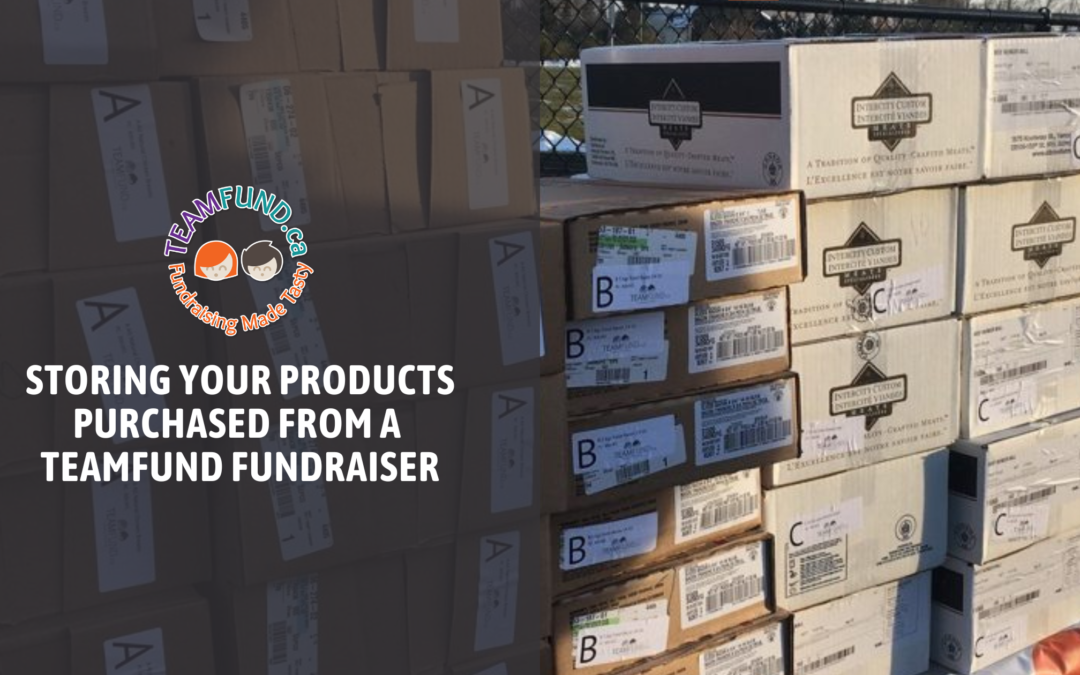Storing products purchased from a TeamFund fundraiser.
So you’ve made a purchase on a Fill Your Freezer fundraiser to support a school, club, sports team, or other organization (thank you for your contributions!)
Now it’s time to get it home and safely store it. Handling and properly storing your product(s) will ensure product quality is upheld and you can enjoy the product at its peak deliciousness.
Many of our products do not contain any preservatives, so the shelf life is shorter.
intendImmediately freeze any products you do not intent to eat within a few days.
Ideal Freezer Temperature
If your freezer manages to freeze food solid, then it’s running at the correct temperature, right?
Turns out: the temperature at which food freezes and the ideal freezer temperature for a product can be two different things. Even if your freezer seems to be doing its job, you should know the correct temperature to set it to!
Kitchen Fact: The ideal temperature range for your freezer is -18° Celsius or below.
Food stored at -18° Celsius or below is safe to eat indefinitely (although quality and taste may be compromised after a while).
While many foods will freeze at about o° Celsius, they need to be stored at 0° Fahrenheit to slow down deterioration. Colder is better.
And don’t worry about freezer burn with really cold temperatures — freezer burn is caused by exposure to air, not temperature.
To make sure your freezer is running at the correct temperature, get a freezer thermometer to monitor the temperature. Make sure to defrost your freezer every once in a while to ensure it is running efficiently.
Communicate with Supporters!
Organizers, it is important to remind your sellers and supporters that fresh meat is PERISHABLE. (Spolumbos for instance)
Portion, Package, and Freeze immediately…while the product is fresh!
Make sure your refrigerator is set at 4 °C (40 °F) or lower and your freezer at -18 °C (0 °F) or lower.
This will keep your food out of the temperature danger zone between 4 °C (40 °F) to 60 °C (140 °F) where bacteria can grow quickly.
Some General Guidelines for Storing Food:
Refrigerate or freeze perishables right away. Foods that require refrigeration should be put in the refrigerator as soon as you get them home. Stick to the “two-hour rule” for leaving items needing refrigeration out at room temperature. Never allow meat, poultry, seafood, eggs, or produce or other foods that require refrigeration to sit at room temperature for more than two hours—one hour if the air temperature is above 90° F. This also applies to items such as leftovers, “doggie bags,” and take-out foods. Also, when putting food away, don’t crowd the refrigerator or freezer so tightly that air can’t circulate.
Keep your appliances at the proper temperatures. Keep the refrigerator temperature at or below 40° F (4° C). The freezer temperature should be 0° F (-18° C). Check temperatures periodically. Appliance thermometers are the best way of knowing these temperatures and are generally inexpensive.
Check storage directions on labels. Many items other than meats, vegetables, and dairy products need to be kept cold. If you’ve neglected to properly refrigerate something, it’s usually best to throw it out.
Use ready-to-eat foods as soon as possible. Refrigerated ready-to-eat foods such as luncheon meats should be used as soon as possible. The longer they’re stored in the refrigerator, the more chance Listeria, a bacterium that causes foodborne illness, can grow, especially if the refrigerator temperature is above 40° F (4° C).
Be alert for spoiled food. Anything that looks or smells suspicious should be thrown out. Mold is a sign of spoilage. It can grow even under refrigeration. Mold is not a major health threat, but it can make food unappetizing. The safest practice is to discard food that is moldy.
Be aware that food can make you very sick even when it doesn’t look, smell, or taste spoiled. That’s because foodborne illnesses are caused by pathogenic bacteria, which are different from the spoilage bacteria that make foods “go bad.” Many pathogenic organisms are present in raw or undercooked meat, poultry, seafood, milk, and eggs; unclean water; and on fruits and vegetables. Keeping these foods properly chilled will slow the growth of bacteria.
Follow other recommended food handling practices. Clean your hands, surfaces and produce, separate raw foods from ready-to-eat foods, and cook to safe temperatures) will further reduce your risk of getting sick.
Fundraise for any season and any reason with TeamFund Fundraising!
Follow us on social media to stay up-to-date!






